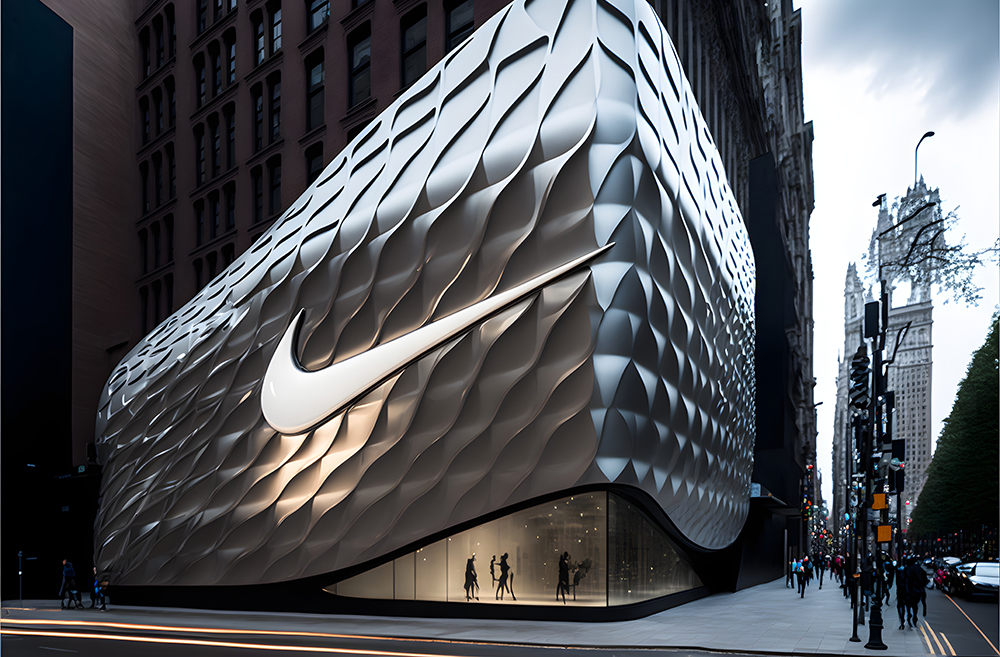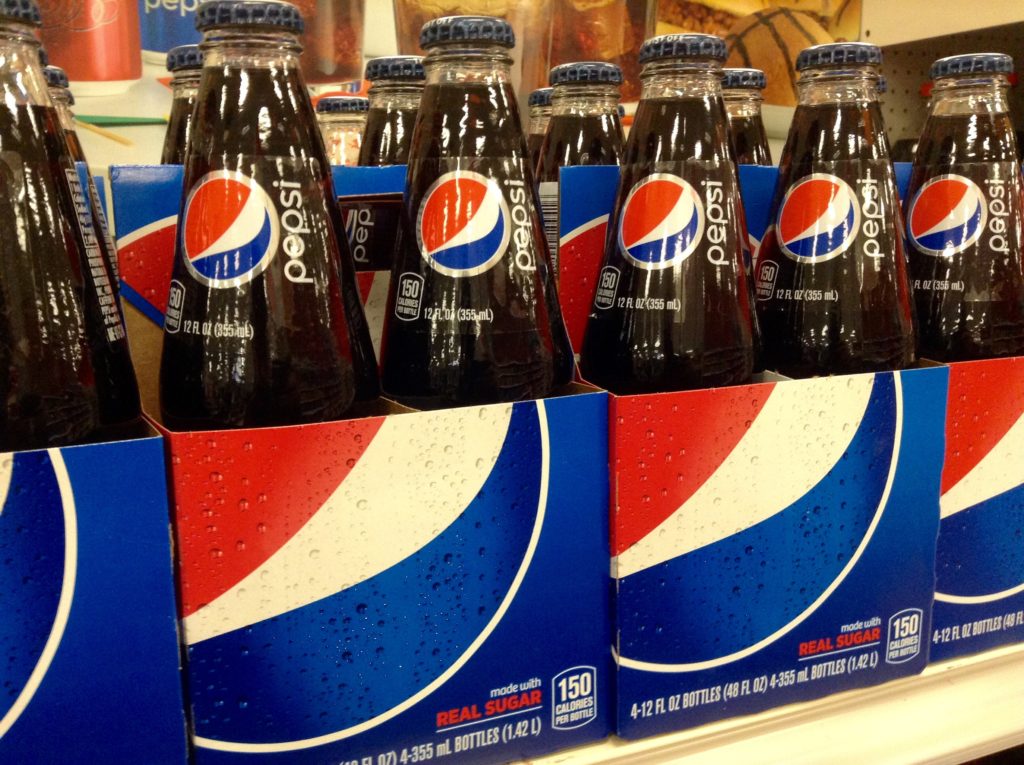The A to Zs of Brand Design & Brand Development
While it might seem that your brand design is merely a logo and well-matched colours, it’s so much more. It’s the entire character and personality of your enterprise.
Let’s play a game. We’ll give you a word—you tell us what comes to mind:
- Swoosh
- Colonel Sanders
- Mickey D’s
- Mouse House
- Beamer
You likely guessed Nike, KFC, McDonald’s, Disney, and BMW. One simple word just conjured up an entire brand portfolio in your mind. It didn’t take much, and those are merely associations.
Let’s say you see two sneakers displayed next to each other. One has a checkmark (or swoosh) symbol, and the other has a logo you don’t recognize. Without doing anything, the recognizable brand design automatically earned your trust. Even if you’ve never owned a pair of Nike-anything before, you probably still trust and favour the pair of Nikes over the other shoes. Instant customer favour and trust are what every brand strives toward.
In a highly competitive marketplace across industries, brand development may be more critical now than ever. This guide offers a blueprint for successful brand development and brand design. We uncover how to establish a unique brand personality, create a sense of authenticity, drive trust, and set your business apart from competitors.

What Is Brand Design?
Brand design translates the intangible aspects of your brand personality and values into a recognizable, visual form. Consumers naturally note and remember products with solid branding over those without relatable brand associations. For example, if you see a red soda can, you immediately associate it with Coca-Cola, regardless of whether you see the name “Coca-Cola.” That’s what a strong brand presence does.
A brand design with attractive colours, visual elements, and a distinctive logo makes your brand memorable. Even if someone isn’t ready to purchase your products or services, they’ll remember you. If your branding sticks, you’ll be the one they turn to when they need the product or service you provide.
You must lock in the basics of brand design elements before creating a compelling and consistent brand identity. Then, use them everywhere consumers see your brand, from websites and billboards to social media branding and promotional merchandise.
What Are the Elements of Brand Design?
While brand design is only one part of your brand development, it’s important to remember that this foundational component is your brand’s visual identity. Therefore, every design element should work cohesively to reflect what you stand for.
Logo
Your logo isn’t your brand. It does, however, communicate the ownership, quality, and values your brand holds. It’s imprinted on your marketing, products, social media, and website—and in your customers’ minds.
Your logo is often the first introduction to your brand design and therefore needs to make a solid and accurate first impression. It differentiates you from competitors, validates your professionalism, and has the power to foster loyalty.
So, how do you create a logo design with a deep symbolic association? How do you create a logo that stays in people’s memories and triggers their emotions? Let’s explore more.
Colour Palette
Colour is a fundamental visual stimulus in the sequence of cognition. Even when we’re unaware of it, colours influence our emotions, which affect how we behave as consumers. While different colours generally have specific emotional associations, it’s important to remember that this can vary according to culture, trends, industry, and context. What’s more, colours can have both positive and negative associations.
For example, red is often associated with passion, love, and excitement, but people also connect it with anger. Blue is positively associated with trust, loyalty, and serenity but can also symbolize coldness, depending on how it’s visually applied to other elements.
Keeping context in mind, choose your brand design and logo colours based on the emotions you want to associate with your brand. The colour should tell a story and, more importantly, set you apart from competitors.
While it’s not set in stone, the most influential brands use a simple colour palette of three or fewer solid colours (rather than gradients). Your base colour should reflect your brand’s most dominant personality trait and appeal to your target audience. Next, the accent colour needs to pair well with the other colours while appealing to your audience and matching your brand personality. It’s the trickiest one to pick. Finally, a neutral colour choice serves as a background, so avoid something that draws attention away from the other elements. It is usually off-white, light grey, white, or beige. When used in the right way, black can also be an option.
Whichever colours you choose, it’s important to remember that colours appear differently in print than on screen. So, make sure you can accurately replicate the colours to maintain consistency.

Imagery & Photography
An image can tell a story, evoke emotion, and express personality—all without a single word. Brand imagery lets you communicate this to your consumers in one second. It can take numerous forms, from photographs and illustrations to social media posts and videos.
Knowing what’s important to your target audience and what they value will help you build trust through your visuals. Consumers crave stories and connections. They do business with people, not brands. Your visuals should therefore bring a human element to your brand design, whether showcasing your best work or expressing your uniqueness. The right imagery makes your brand relatable and your message memorable.
It’s also important to be consistent with your imagery style. Consistency makes your brand easier to recognize, which builds trust.
Typography
You’ve probably heard that how you say something is just as important as what you say. Well, consider typography as how you “say” your brand message. Typography has the power to convey a tone of voice and personality. It can portray elegance, whimsy, playfulness, or professionalism.
When choosing a typeface, ensure the wording is clear and legible, even from a distance. There also needs to be a visual balance with other design elements. It might be time for a change if your typography doesn’t effectively represent quality and professionalism.
Iconography
Iconography serves two purposes: it lets you communicate information universally and helps users navigate complex systems. Icons are easily recognizable—you can instantly convey a message regardless of language or cultural barriers. Because people are generally highly visual, iconography is much more memorable than words.
Design your icons in cohesion with the rest of your brand style and personality and ensure they fit seamlessly into your existing designs. Icons should also clearly suggest the functionality with which they’re associated without your audience having to read the accompanying text.
One mistake companies make is cramming too many icons on their pages. Icon overload decreases the impact of each one and becomes visually overwhelming. Instead, set yourself apart with unique, functional designs that are cleverly implemented but still easy to understand. As a result, your brand will be more recognizable and highly memorable.
Motion & Animation
Motion is impossible to ignore in the interactive space. Even small animations, from blinking cursors to jumping icons, beg the user to interact. Because brands constantly communicate via screens—whether a computer, smart TV, or mobile device—it’s easier than ever to integrate motion graphics into your brand story.
Motion graphics enable you to convey a message or idea more effectively than traditional static images or photographs. Whether used as a single element in a brand or as part of a more extensive multimedia presentation, motion graphics can bring life and depth to any design.
It’s also a powerful way to evoke emotion that leads to action. Since you can program the movements to respond to music, cues, and other elements, animations add more dynamism and energy to a brand. This can create something truly distinctive that sets you apart from competitors.
Important Steps to a Successful Brand Development
Brand development is more than getting a logo and finalizing brand design elements. Before you ever start the brand design process, there are vital steps to work through to create a strategy-driven plan for successful brand development. First, it’s time for some self-discovery. You need to know who you are, what you stand for, and what you want customers to remember you for. Once you have pinned this down, you can start working on designs that convey this message effectively.

Find Your Brand’s Purpose
Every brand needs a purpose. This is what drives your brand design and gives it life; it’s the reason your customers buy from you. Without a purpose, it’s impossible to have an impact.
While consumers in the past made purchase decisions based mainly on their needs, price, and quality, things have changed. Today’s consumers want the businesses they support to have a bigger purpose than driving profits. Customers care about the impact brands have on the world and the environment. To be successful, you need a purpose that resonates with your audience. And you must be able to draw them to the idea that their purchase does more than just obtain goods.
Prospects are more willing to buy from you if they feel you embody and inspire change. In addition, they want to feel that supporting you is a partnership in taking action to make a positive difference in the world.
Consider your company’s values and ethics to define or evolve its brand purpose authentically and sustainably. Go beyond superficiality. Integrity—both internal and public—is essential. At a time when negative news can go viral in seconds, brands face immense scrutiny.
Avoid choosing a current issue when establishing your brand’s purpose. Be honest about what inspires your business. Your purpose must be in sync with your products and services, or it won’t be credible. Keep it simple.
If your brand purpose is obsolete, it’s not too late to update it. Today’s customers are knowledgeable and want brands to evolve as they build their market presence. Therefore, crafting a new purpose is better than sticking with an ineffective one.
How to Identify Your Brand Purpose
Developing your brand purpose should involve input from your employees and various stakeholders. However, it should also align with your customers’ needs and passions. Qualitative research can deepen your understanding of what’s essential to your customers.
Ask yourself what you’re best at or passionate about and what difference you can make. The point at which these answers collide with what matters to your target market is precisely where your purpose lies. If your solutions don’t align, keep working on ideas.
A pet shop, for example, serves customers who are passionate about their pets. They’re good at and passionate about animal care and can make a difference with animal welfare drives, projects, and donations. It’s the perfect collision of matching what they’re good at and passionate about with a purpose that will also appeal to their target audience.
Know Your Target Audience
Defining your target audience is critical to developing an effective brand strategy. It enables you to craft a brand design that appeals to your desired customers. By understanding their needs, preferences, and behaviours, you can develop a brand identity that resonates with them and addresses their pain points. You can also more effectively create a brand personality that aligns with the values and aspirations of your target audience to foster an emotional connection and engagement.
Knowing your ideal audience is necessary to guide your marketing communications. It will serve as a roadmap to the design, personality, and message of your marketing and to which channels will be most effective in reaching prospects. The deeper your understanding of your target market, the more impactful your marketing is. You’ll also maximize your marketing return on investment (ROI).
Going a step further and breaking consumers into distinct segments enables you to focus your marketing efforts on those most likely to engage with specific products or services. Categorizing potential customers for effective marketing typically involves location, purchase behaviour, and demographic factors such as age, race, gender, income, and family stage. With this information, you can effectively send the right marketing message to the right customer at the right time.
Define What Makes Your Brand Stand Out from Competitors
Marketing is essential for any business to succeed and grow. However, you’ll get lost in the crowd if you don’t differentiate yourself from the competition. Having a unique selling point (USP) is crucial in standing out and attracting the right customers. Here are some benefits:
- A USP helps separate your business from the competition.
- It gives customers a reason to choose you over competitors.
- Customers are more likely to remember companies with a clear USP.
- It can provide customers with an emotional connection to your business.
- It can also help build trust and loyalty between your business and customers.
When defining your USP for optimal brand development, consider the following:
- What makes your product or service unique?
- How do you make customers’ lives better?
- Why do customers keep coming back to purchase from you?
- What makes customers stop buying from you?
Analyze competitor ads and marketing messages to see how they position themselves and where you fit into the market. When crafting your USP, it’s also important to know current market trends and what appeals to consumers.
Leverage the Power of Personalization
If you want to create a memorable customer experience, make it personal. Personalization focuses on delivering tailored, meaningful, and relevant customer communications. It enables a business to activate its available data to provide relevant experiences for existing customers and prospects. Every person must feel as if you’re paying attention to their unique needs.
Consumers are tired of feeling like another target or statistic. Instead, they want brands to recognize them as individuals with names and unique needs. They want brands to know what they need before they need it.
As classic marketing disciplines like advertising, prices, and services become more personalized, data and analytics must be at the core of your brand development. You can determine what keeps consumers returning by tracking demographics and how they engage with your products, services, and brand. Then, with relevant feedback and analytics, you can improve retention with automated, on-point, personalized offers.
Craft Your Messaging
Brand messaging is a crucial part of brand development because it’s where your brand design, USP, personality, and purpose all come together. It’s how you communicate all of this to your audience effectively. The challenge is that you only have a second or two to do so. But the good news is that both verbal and non-verbal brand messaging have the power to inspire your audience and motivate them to action.
Develop a brand messaging framework to guide your communication. While a successful messaging framework always focuses on the customer first, it’s also authentic. First, consider the language you’ll use to communicate with your audience. Then, carefully craft your words to be relevant and evoke emotion. Consider the tone of voice you’ll use when speaking to them and create a flow that will draw them in.
Apply your brand message framework to everything you produce and all your marketing decisions. Whether you’re writing website copy, designing packaging, or posting on social media, your verbal and non-verbal cues should communicate your brand message. This will ensure consistency, which is essential to foster recognition and loyalty.
Slogan
We’ve all seen them—those clever slogans that help us to remember a product or a brand. Whether it’s “Just Do It” or “Got Milk,” these short and simple phrases can stick in our brains and impact how we view a company, product, or service. Slogans also evoke strong emotions, making us feel excited, nostalgic, hopeful, or even safe.
A good slogan is easy to remember but also has meaning. It conveys the company’s identity and values and summarizes the brand promise. It’s essential in your brand design because it sets you apart from your competitors. So, make it catchy but easy to say and recall.
When crafting the perfect slogan:
- Keep it simple.
- Make sure it reflects your brand personality.
- Think of how your target audience will receive it.
- Make sure it’s easy to remember.
- Keep it true to the company’s mission.

Name Your Brand
Brand name selection is vital for marketers because it boosts memorability, generates positive connotations, drives recognition, and increases product preference. As a result, it contributes directly to brand equity. It’s also a critical element in brand development and brand design as it is (and will forever be) the primary identifier encapsulating who you are.
Use these tips when selecting a brand name:
- Simplicity: Most profitable companies have appealing, simple names with four to six characters that can be easily spelled and pronounced. Shorter names aid memorability.
- Easy to Pronounce: Make it as easy as possible for customers to communicate your brand name. It should be easy to read and pronounce when seen for the first time. Again, simple pronunciation patterns and fewer characters will count in your favour.
- Universality: Your brand name should be universal and recognized quickly by people of all languages without negative connotations.
Bring Unforgettable Personality to Your Brand with Alphabet® Creative
Your brand design is critical to its differentiation and memorability. Competition is fiercer, and consumers are pickier than ever before. To forge an unforgettable visual identity that turns heads, you need expert insight into the value of separate elements and their cohesive magic in brand design. Every aspect should bring your brand personality to life, from your logo and imagery to colours and typography.
Investing in your brand development is one of the most important things you can do for your business’s long-term success. At Alphabet®, we work with you to make the world your marketplace through robust brand development and brand design. Our branding experts will uncover the truth of your brand, then help you integrate, execute, and live that truth throughout your entire organization. Contact us today.